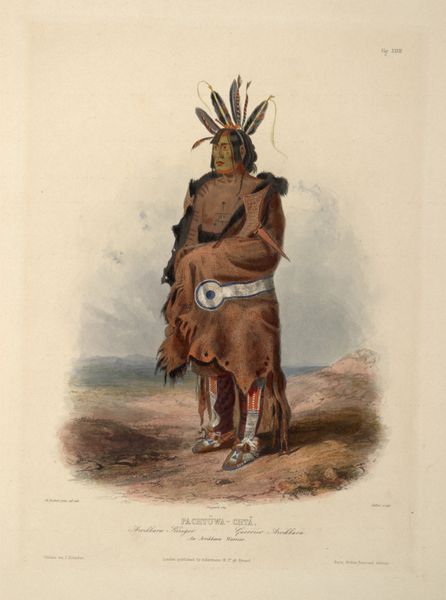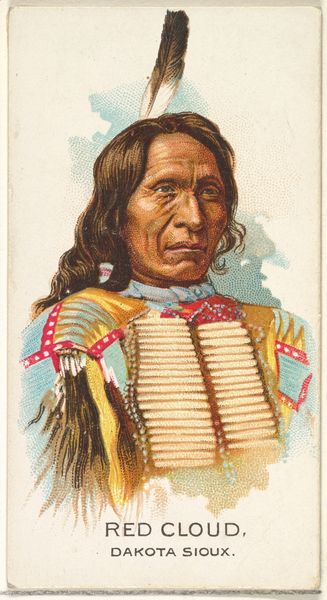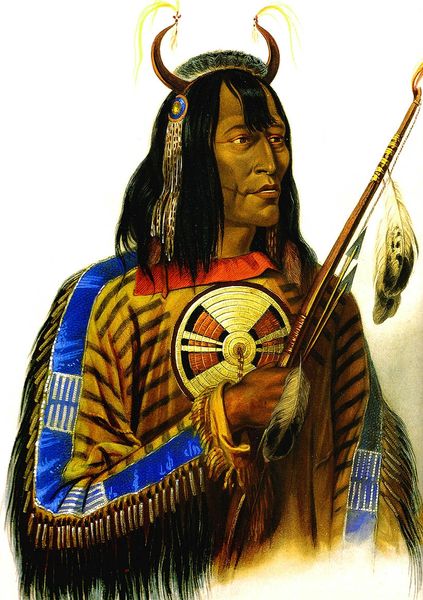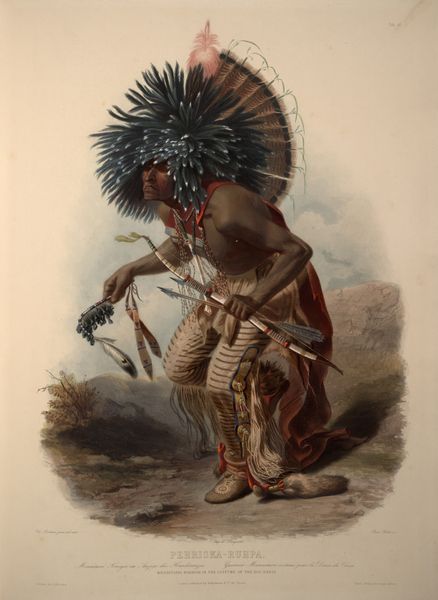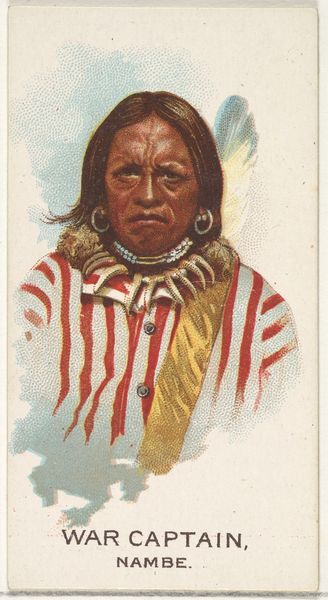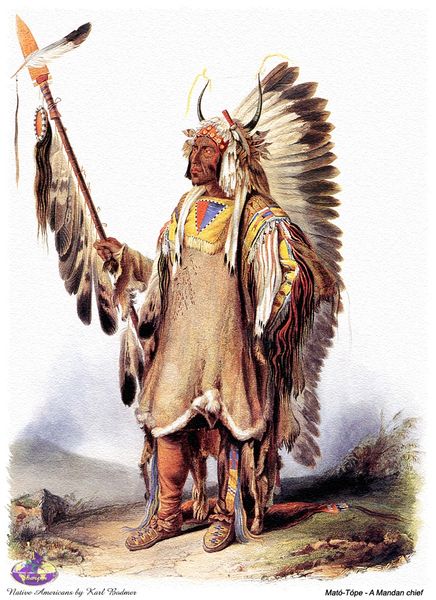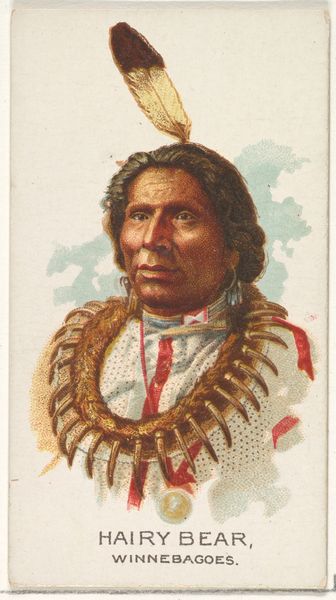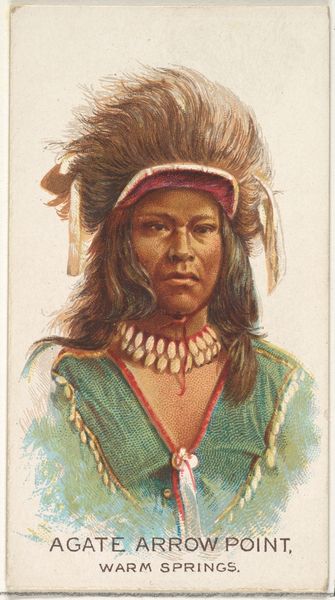
painting
#
portrait
#
painting
#
oil painting
Copyright: Public domain
Curator: This is Karl Bodmer’s oil painting "Pehriska Ruhpa Minatarre or Big Bellied Indian," created in 1834. Editor: It strikes me immediately – this blend of raw power and quiet dignity. He looks like a storm cloud about to break, doesn’t he? Or maybe that’s just the drama of Romanticism talking. Curator: Bodmer's meticulous detail certainly elevates this portrait beyond mere representation. It's crucial to acknowledge the historical context: these portraits were commissioned during a period of westward expansion, and they document a culture that was facing immense pressure. The blankets he’s wearing show intricate design that undoubtedly involve unique materials and techniques handed down over generations. Editor: Absolutely. The labor embedded in those designs! And there's something incredibly humanizing in that detailed rendering – a push against the simple stories often told about these communities. Did you notice how he's clutching that ceremonial pipe? It makes you think about the rituals, the history, the very breath that connects him to his ancestors. Curator: It's also interesting to observe the economic relationship inherent in this commission. Bodmer, a European artist, was employed to capture the likeness of this Minatarre leader. It raises questions about who controls the narrative and how cultural exchange gets shaped by power dynamics. Editor: Exactly! I feel this piece dances between observation and participation. It’s an outside view, yes, but tinged with respect, an artistic quest for understanding of the other – with its inevitable blind spots. All those textures in the robe and ornaments, lovingly replicated – they pull you in, whisper of stories untold. I think a lot of the piece hinges on these details. Curator: Right, and the very act of portraying him elevates him. Bodmer immortalizes Pehriska Ruhpa, giving visibility to a figure from a society frequently disregarded or stereotyped. The scale is significant, commanding a presence within a gallery space usually filled with European nobility. Editor: In the end, I’m left thinking about what’s *not* painted. The loss, the struggle, the untold stories shimmering behind his stoic expression. This man lived through an epoch shift, and something sacred got frozen in paint here. It’s melancholic and powerful. Curator: Indeed. Through an analysis of materiality and commission, this image opens questions around documentation, control, and cultural encounter during the era of western expansion.
Comments
No comments
Be the first to comment and join the conversation on the ultimate creative platform.


